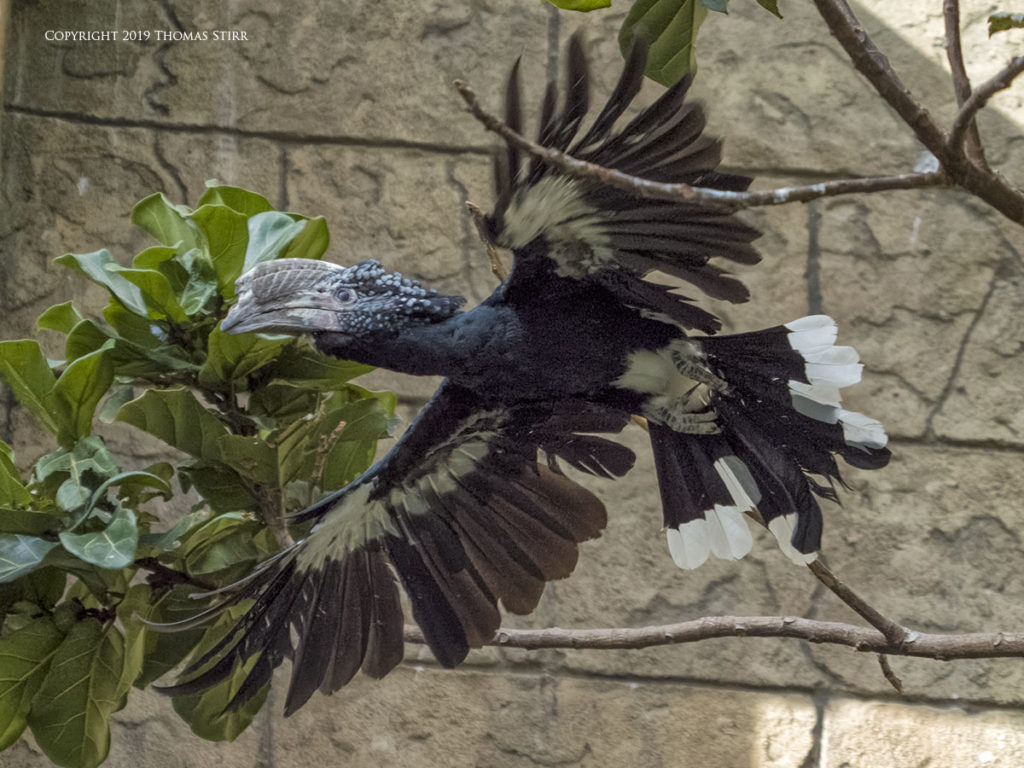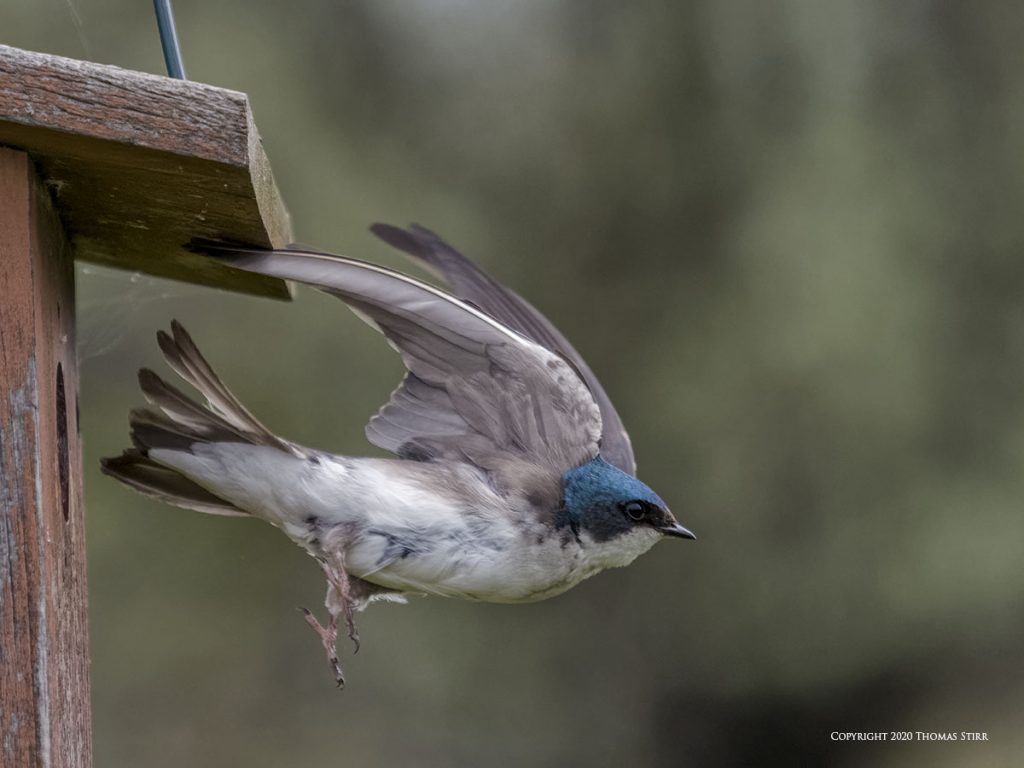This article shares some of my favourite Pro Capture images that were created using an E-M1X, M.Zuiko telephoto lenses, and M.Zuiko teleconverters. All were captured handheld. Without question the more that I have used Pro Capture, the more indispensable it has become to my bird and insect photography.
NOTE: Click on images to enlarge.

The image above, captured over 2 years ago, was one of my first attempts to capture a butterfly in-flight with Pro Capture. As a complete neophyte with Pro Capture technology I was amazed with how easy and effective this feature was to use.

After a few months of working with Pro Capture I created the Silvery Cheeked Hornbill photograph above at Bird Kingdom in Niagara Falls. With a large bird like this one it is possible to pan with the subject while storing images in temporary memory as Pro Capture does its job. This photograph is my favourite Pro Capture image captured indoors.

This cardinal photograph ranks as one of my favourite Pro Capture images because of the surprise factor. I was actually trying to photograph a different cardinal taking flight when the bird in this image appeared out of nowhere. This photograph was from the end of the Pro Capture H run, after the first cardinal had exited the scene.

I absolutely love the sense of anticipation created by the blue jay in the photograph above. I placed my single AF point on the peanuts in the gloved hands and waited for the blue jay to land before I fully depressed my shutter release.

Some of my favourite Pro Capture images are early attempts using this technology. In the case of the swan photograph above, it was one from an extended image run capturing aggression between swans. This was the first time that really started to understand the potential power of using Pro Capture L with birds in flight.

This cardinal photograph is one of my favourite Pro Capture images as the subject bird took flight at the exact angle that was anticipated. I always feel a sense of accomplishment when this happens. And, also thankfulness that my E-M1X can consistently capture these moments that were in my mind… then make them reality for me.

This photograph of a sparrow flying in a maze of branches illustrates one of the powerful advantages of Pro Capture. Even if a bird is partially hidden behind branches and leaves, Pro Capture can be effectively used to capture it in flight as it navigates obstacles in mid-air. This expands the potential to capture a wide range of bird-in-flight photographs in tight, crowded environments.

Anyone who has tried to photograph swallows around nesting boxes knows how difficult it can be to capture this fast-breaking action. Once a photographer gets their Pro Capture timing correct, capturing images like the one above is something that can be done with absolute confidence.

I love using Pro Capture H to photograph swallows taking flight. The resulting images always fill me with a sense of awe with how the E-M1X can consistently, and effortlessly perform.

Finding subject birds in dense foliage and being able to create images of them taking flight expands what is possible for a bird photographer. After using Pro Capture H for the past two years, I now look at bird-in-flight photography in a completely different way. It is now all about an expanded understanding of what is possible.

As long as my eye/hand coordination is quick enough to get a single AF point on a subject bird and I can half depress my shutter release to start Pro Capture H spooling images, the size and speed of a bird are of little concern.

This Baltimore Oriole photograph is one of my favourite Pro Capture images. I love the wing position of the bird and the strong sense of motion. I captured this photograph through the sliding glass door in my kitchen.

Pro Capture re-invigorates a sense of joy and wonder when photographing common birds. I’ve never felt these emotions to the same degree with any other camera that I’ve owned in the past.

I watched this water fowl dive a couple of times and felt the stillness of the water had a magical quality to it. Pro Capture H allowed me to capture the exact image I had in my mind. It is a wonderous thing when a camera like the E-M1X helps to facilitate creativity. It never gets in the way.

Combing the E-M1X’s Bird Detection AI Subject Tracking with Pro Capture L has proven to be a powerful combination. I now have one of my Custom Modes on my E-M1X dedicated to this pairing of technologies. Using Bird AI in conjunction with Pro Capture L is one of my favourite ways to photograph birds-in-flight.

Pro Capture H allows me to confidently photograph birds taking flight from a nest hidden in foliage.

Capturing specific in-flight bird behaviours, like a tern doing a mid-air shake, can be done with a higher degree of certainty and confidence when using Bird AI combined with Pro Capture L, than I have ever experienced in the past.

This swallow taking flight is another of my favourite Pro Capture images. I find the swallow’s body position to be both artistic and athletic in form.

When using Pro Capture L in combination with Bird AI, I typically shoot a series of 10 image bursts, rather than one long, uninterrupted photo run. I find this allows me to be more discerning with the specific behaviours I’m capturing. After all, I can commit them to permanent memory after the action has occurred.

Using Pro Capture H to capture photographs of flying insects like dragonflies, bees, wasps, butterflies, and even a clear-winged hummingbird moth, is simply fantastic.





This summer, in the span of just a couple of hours sitting on my back deck, I was able to create more good, usable photographs of butterflies in flight, than I had in the previous 5 years. This was made possible by Pro Capture H technology.

As mentioned on this website in numerous articles in the past… each of us should buy and use the camera gear that best suits our individual needs.

On a personal basis, I simply cannot imagine owning a camera that did not have Pro Capture. This technology has dramatically expanded what is now possible for me when photographing birds and flying insects.
Technical Note
Photographs were captured handheld using camera gear as noted in the EXIF data. Images were produced from RAW files using my standard process. Crops are noted as appropriate. This is the 1,066th article published on this website since its original inception.
How you can help keep this site advertising free
My intent is to keep this photography blog advertising free. If you enjoyed this article and/or my website and would like to support my work, you can purchase an eBook, or make a modest $10 donation through PayPal. Both are most appreciated. You can use the Donate button below. Larger donations can be made to tom@tomstirr.com through PayPal.
Word of mouth is the best form of endorsement. If you like our website please let your friends and associates know about our work. Linking to this site or to specific articles is allowed with proper acknowledgement. Reproducing articles, or any of the images contained in them, on another website or in any social media posting is a Copyright infringement.
Article is Copyright 2021 Thomas Stirr. Photographs are Copyright 2019-2021 Thomas Stirr. All rights reserved. No use, duplication or adaptation of any kind is allowed without written consent. If you see this article reproduced anywhere else it is an unauthorized and illegal use. Posting comments on offending websites and calling out individuals who steal intellectual property is always appreciated!


The Baltimore Oriole is the best of the best!
Hi Ed,
The is one of my all time favourite Pro Capture H images as well.
Tom
Great post, I have just joined the M4/3 camp. I have a complete and heavy Nikon set up for birding and I will eventually lighten my load. Right now , I just have the plastic fantastic 40 -150. My next lens purchase is giving me some concerns. Should it be 40-150 pro or 100-400? I am shooting with EM1 ll.
Hi Steve,
Choosing between the PRO 40-150 mm f/2.8 and the 100-400 mm f/5-6.3 IS can be difficult. Here is a link to an article I wrote some time ago: https://smallsensorphotography.com/m-zuiko-100-400
I think it is prudent to look at your overall M4/3 system plan and examine how these two lenses may fit into that larger perspective. In terms of overall flexibility and absolute image quality the PRO 40-150 f/2.8 would be a better choice. If the 100-400 mm did not accept teleconverters I would not have bought it. Ultimately it was the superior reach of the 100-400 that made it a no-brainer purchase for me. Regardless of whether you choose the PRO 40-150 f/2.8 or the 100-400 mm f/5-6.3 I would suggest considering both M.Zuiko teleconverters. Both are excellent and add some great flexibility.
I own both of the lenses you are considering and love them both… but for different reasons.
As a practical, relatively lightweight, and reasonably affordable nature/birding lens the 100-400 is terrific and I’ve never second guessed buying it. The PRO 40-150 mm f/2.8 is my favourite lens out of my entire collection of the 7 M.Zuiko zooms and 2 primes that we own. https://smallsensorphotography.com/favourite-m-zuiko-lens
My wife and I built up our Olympus kit in 3 stages. We have now completed that process and have no plans to purchase any additional gear. Not sure if this reply has helped or clouded your decision further.
Tom
The results are great but do you have also results from M1 Mark 2 or 3 camera without the bird eye detection. I donot want to buy the EX1 because the camera is to heavy for me.
Capture H for flying birds I see? I read in your articles flying birds choose Capture L. Could you explain why you made this choise. thank you
Hi Bart,
Pro Capture H does not provide continuous auto-focus. The first frame sets auto-focus and exposure for all of the frames that follow in the run. If a bird is flying away from, or towards the camera, the bird can go out of focus pretty quickly. I use Pro Capture H for birds and insects taking flight as their angle of flight is somewhat more predictable. The main benefit of Pro Capture H is that it has a maximum frame rate of 60 frames-per-second available. I find this very fast frame rate to be excellent to capture incremental differences in body and wing position as a bird/insect is taking flight.
Pro Capture L gives a photographer continuous auto-focus so it is better for birds-in-flight for this reason. The maximum frame rate with Pro Capture L is 18 frames-per-second.
I have large hands and do not find the E-M1 Mark III comfortable to use, especially with longer telephoto lenses. Using a heavier lens like the M.Zuiko PRO 40-150 mm f/2.8 with the E-M1 Mark III causes me forearm cramps within a few minutes. I can shoot the E-M1X with the M.Zuiko 100-400 mm f/5-6.3 IS (which is much heavier than the PRO 40-150 f/2.8) all day long without issue. So, it isn’t necessarily the weight of a camera body that can be a comfort issue, but rather the size and shape of the grip.
I’ve never used Pro Capture H or L with my wife’s E-M1 Mark III so I can’t comment or provide samples. Actually I almost never use The E-M1 Mark III for anything as I find the E-M1X a significantly more comfortable to use. My wife also prefers the grip of the E-M1X over the E-M1 Mark III but prefers the size/weight of the Mark III.
Tom